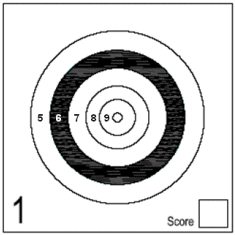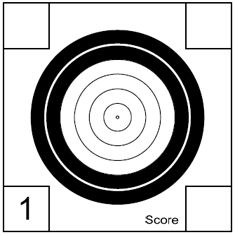What is Benchrest Shooting?
As the name implies, shooting is normally done seated from a bench with the rifle supported by a front rest and a rear bag, if preferred, a prone position can be used. A time limit of 30 minutes for as many sighting shots plus the 25 scoring shots, the time is reduced to 20 minutes if shot indoor.
Both Rimfire and Air Rifle disciplines are divided into various ‘classes’ dependant on overall weight of the rifle. Other factors, such as maximum scope magnification, also come into play. A more detailed breakdown can be found on our website but are briefly as follows:
Rimfire: Four classes for rifles ranging from light sport to unlimited shot both 25yd and 50m, both in-doors or out. .22rf calibre only.
Air Rifle: Five classes, again , ranging from light sporting to unlimited and being shot at both distances. Any calibre is acceptable and scoring must be done using the correct gauge for the calibre used.
Targets: These differ slightly for the two distances and can be downloaded form the website but you do need access to A3 printing. The targets were designed specifically for Rimfire benchrest and offer a significant challenge over those adopted form other shooting disciplines.
This is a 25yrd target and is scaled at actual size. The central, 10, ring is 2mm! Scoring is ‘best edge’ and to count a 10x the ring must be obliterated. There are 25 scoring diagrams, one shot per diagram, plus five diagrams for sighters.
If you think it’s easy, then cut the target out and have ago and see how you get on and use a .22 gauge to score.
This is the 50m target to scale. The 10 ring is proportionately large, same scoring as above but the central dot is the 10x
Again if you think it’s easy cut the target out and have ago for yourself and see how you get on and remember to gauge it.
What do you need apart from a .22 Rimfire Rifle or .22, .177Air Rifle
In both cases the classes have been set up to allow anyone already shooting, anything from a light sporting type rifle through to a full blown target job, to easily adapt their existing equipment.
This could be as simple as the addition of a telescopic sight or, jumping in at the deep end, a specialist stock to fit an existing action/barrel. Be aware that there are very specific rules governing what is allowed in each class when you decide to take the ‘modification’ road!
Benchrest equipment all depends on your budget and were you want to start. There are two elements to the benchrest equipment and that is a front rest and a rear bag. There are devices out there that are all in one pieces, but they are not all allow within our type of benchrest shooting.
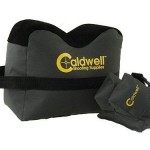 At the budget end of the market, you may be looking at the Caldwell Dead Shot bag. This starts from around £30 but you will have to fill it with sand yourself. Ask your local Gun Dealer for details or if you’re a fan of Ebay then you might get a good deal on there. This is a basic setup and may be a good way of trying benchrest with a minimum out-lay.
At the budget end of the market, you may be looking at the Caldwell Dead Shot bag. This starts from around £30 but you will have to fill it with sand yourself. Ask your local Gun Dealer for details or if you’re a fan of Ebay then you might get a good deal on there. This is a basic setup and may be a good way of trying benchrest with a minimum out-lay.
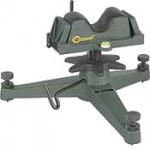 This is a slightly more expensive piece of kit but, as you can see, offers more stability and adjustment. Again made by Caldwell they a quite widely available for well under the £100 mark.
This is a slightly more expensive piece of kit but, as you can see, offers more stability and adjustment. Again made by Caldwell they a quite widely available for well under the £100 mark.
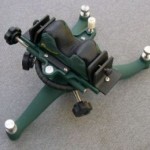 Next up is the Caldwell BR1000. This offers a considerable weigh advantage over the previous model giving better stability. This one is adjustable for both windage and elevation. The good news about this model is that has come down in price and you may be able to pick it up for around £100.
Next up is the Caldwell BR1000. This offers a considerable weigh advantage over the previous model giving better stability. This one is adjustable for both windage and elevation. The good news about this model is that has come down in price and you may be able to pick it up for around £100.
And again you will have to purchase a rear bag and both bags needed to be filled by you.
Barrel Tuners
This is an innovation from America and is basically a weight at the front of the barrel (this is only for .22 Rimfire). As you get into the technical side of shooting you will know that when a round travels through barrel the harmonics can change. By using a barrel tuner you can get the right harmonics so that the round travels were you want it to go to.
As you can see, apart from the actual rifle, there are a few essential pieces of kit required but the outlay can be kept within reasonable limits.
There are, of course, lots of other bits and pieces you can add both to the rifles and ancillary equipment, like any other part of the sport, the sky’s the limit.
